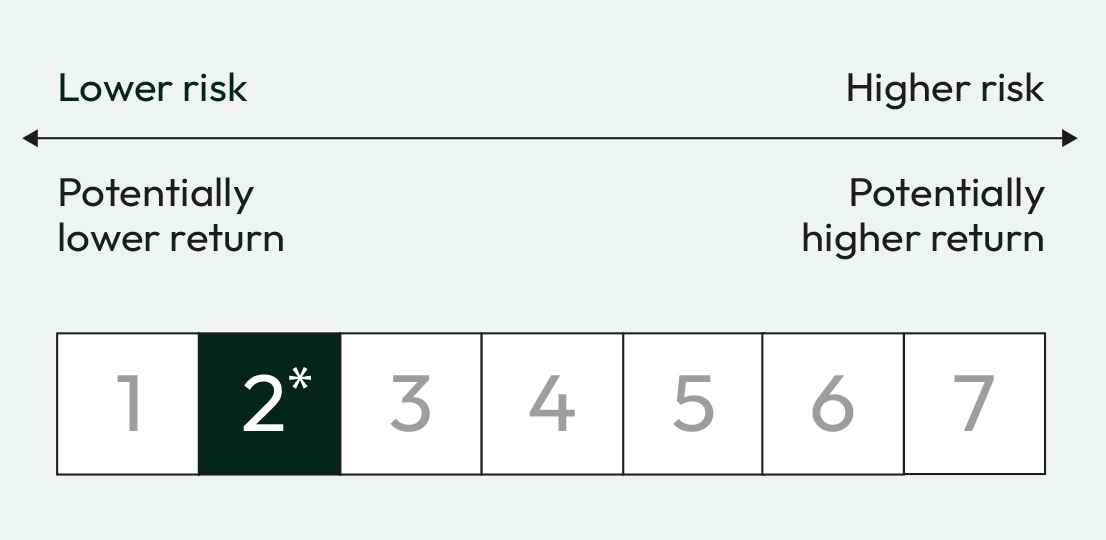No need to reinvest at lower rates!
You decide!
Discover Target Maturity Bond Funds
And choose the option that best meets your needs

The internal rate of return (IRR) of the bond portfolio at maturity of this fund is 3.42%2. Data gross of fees and charges, which correspond to 1.04% of the total investment, to be deducted from the IRR shown. The 2022 return of the fund was 1.72%, 12.76% in 2023, and in 2024 was 7.24%2. The YTD return is 3.19%.
Fund portfolio maturity: May 20272
Unfavourable scenario2 based on past returns for a 10-year horizon: -0.45%

The internal rate of return (IRR) of the bond portfolio at maturity of this fund is 4.17%2. Data gross of fees and charges, which correspond to 1.14% of the total investment, to be deducted from the IRR shown. The 2023 return of the fund was 5.26% and in 2024 was 7.97%2. The YTD return is 4.48%.
Fund portfolio maturity: February 20292
Unfavourable scenario2 based on past returns for a 10-year horizon: 0.00%

The internal rate of return (IRR) of this fund's bond portfolio at maturity is 4.82%2. Data gross of fees and charges, which correspond to 1.14% of the total investment, to be deducted from the IRR shown. The YTD return is 4.45%.
Fund portfolio maturity: October 20312
Unfavourable scenario2 based on past returns for a 10-year horizon: 0.00%
Click "More information" to consult the fact sheet of each investment fund where you can find, among other information, the historical return of the last 5 years (or from the inception date of the fund, if it is less than 5 years old).
How do these funds invest?
They invest in corporate bonds with a fixed maturity.
This gives investors visibility over expected returns in line with the maturity horizon.
Why are Target Maturity Funds
a potentially good option?
- First off, you reduce the risk of reinvestment at lower interest rates, as the bond portfolio is already bought and will be kept at a fixed rate until the bonds mature. This allows you take advantage of current interest rates for longer.
- This type of product combines the simplicity of investing in a single bond and the benefits of a diversified fund, as it buys a portfolio of different bonds with a unified maturity.
- These funds do not charge a redemption fee, so you can withdraw your investment whenever you want without any charge.
Bear in mind that any investment carries some level of risk, including the lack of return, loss of invested capital and/or foreign exchange risk for non-euro-denominated products. Redeeming your investment prior to the recommended term may increase the risk of loss. Likewise, past performance is no guarantee of future results.
Need more information? Check out the FAQ section.
Find other investment funds among the 3,000+ funds we offer using our Fund Finder tool.
Before investing, please consult the risk rating and information for each of the Investment Funds distributed by Open Bank, S.A., in the Prospectus or Key Investor Information Document (KIID) for each one of the Investment Funds, available at www.openbank.es and www.cnmv.es.
1 Source: European Central Bank as at 05/06/25. The European Central Bank has cut its key interest rate from 2.25% to 2.00%.
2The Internal Rate of Return (IRR) expressed as the yield to maturity of the portfolio of bonds (YTM) in which each of the investment funds invests, taking into account the principal and coupon payments (if any) and without the value shown being taken as the sole value of the potential return on the participant's investment. This IRR figure is gross of investment fund fees and must be net of the fund's ongoing expenses, which include all of the fund's costs, including the costs of purchasing and holding the fixed income issues in which it invests, which are implicitly deducted from the fund's daily net asset value and which are expressed as an annual percentage. The risk is defined on a scale of 1 to 7. Risk rating 1 does not mean a risk-free investment. Source of return: Refinitiv. The 2021 , 2002, 2023 and 2024 return corresponds to the period from 01/01/ until 31/12/ of every year, except in 2023for the Carmignac Credit 2029 Fund, which corresponds to the period from its inception on 20/10/2023 until 31/12/2023; and the 2025 return corresponds to the period from 01/01/2025 until 31/10/2025. The returns shown are net of fees. IRR provided by the asset manager on 31/10/2025.
The unfavourable scenarios presented are an estimate of future performance based on past data on the change in this investment and are not an exact indicator. What you will receive will vary depending on market developments and the length of time you hold the investment or product.
The unfavourable past performance scenario occurred between January 2016 and January 2020 for the Carmignac Credit 2027 fund, February 2016 and February 2021 for the Carmignac Credit 2029 fund, and between February 2016 and February 2021 for the Carmignac Credit 2031 as set out in the funds' KIID respectively. Past performance is no guarantee of future results.
IRR and average maturity of the investment fund portfolios are provided and revised by asset managers and updated by Open Bank, S.A., at least once a month.
The information on this website is not intended to influence any decision of the recipient and does not represent a personalised recommendation of investment or advisory services, given that the financial situation, investment goals or other personal needs of the end investor, who is responsible for making a decision on their own investment based on the legal documentation of the Investment Funds prior to investing, have not been taken into account.
We make it simple. Give us a call on 91 117 33 16 or 900 10 29 38 and our team of investment specialists will be happy to help (Mon-Fri 8 a.m. to 8 p.m.).